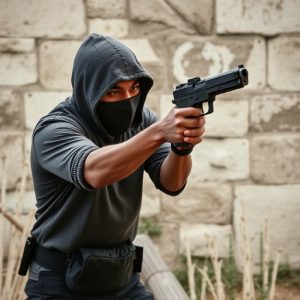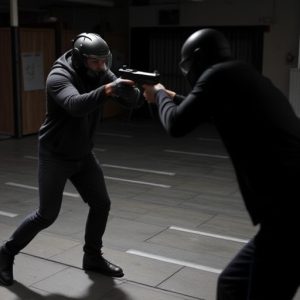Unlocking Stun Gun Power: Amperage, Testing, & Top Safety Picks
Understanding stun gun stopping power ratings is crucial for self-defense. Key factors like voltage,…….
Understanding stun gun stopping power ratings is crucial for self-defense. Key factors like voltage, current, and delivery mechanism determine shock intensity. The best safety features in stun guns include precise targeting, reliable activation, finger-trigger technology, and robust materials. Evaluating amperage and voltage output, contact area, and smart sensors is essential. Reputable manufacturers follow rigorous testing protocols for accurate ratings. Prioritizing safety includes tactical triggers, light & sound alerts, and automatic shut-off mechanisms. Responsible stun gun ownership involves understanding local laws, proper training, and treating them as lethal weapons with care.
“Uncover the truth behind stun gun stopping power ratings—a crucial aspect of personal safety. This comprehensive guide explores how these devices work, what factors influence their effectiveness, and why amperage and voltage matter. We delve into testing protocols used to evaluate their stopping power, spotlighting top models with the best safety features. Additionally, we navigate legal considerations and responsible ownership practices for peace of mind.”
- Understanding Stun Gun Stopping Power Ratings: A Comprehensive Guide
- Key Factors Influencing Stun Gun Effectiveness
- The Role of Amperage and Voltage in Stun Guns
- Testing Protocols for Evaluating Stopping Power
- Top Stun Guns with Impressive Safety Features
- Legal Considerations and Responsible Ownership
Understanding Stun Gun Stopping Power Ratings: A Comprehensive Guide
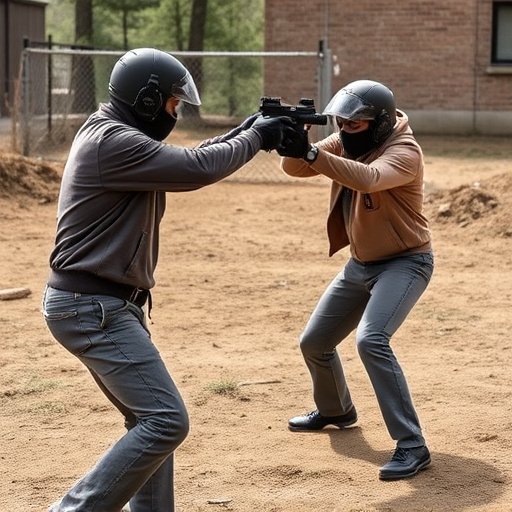
Understanding Stun Gun Stopping Power Ratings: A Comprehensive Guide
Stun gun stopping power ratings are a crucial aspect to consider when evaluating self-defense tools. These ratings provide valuable insights into the effectiveness of a stun gun in incapacitating an attacker, thereby ensuring your safety. When looking at stopping power, factors like voltage, current, and delivery mechanism play significant roles. Voltage, measured in thousands of volts (kV), represents the electric charge delivered to the target, while current (amps) signifies the flow of electricity. Together, they determine the intensity of the shock, aiming to disrupt muscular control and cause temporary incapacitation.
Among the best safety features in stun guns are precise targeting capabilities and reliable activation mechanisms. Targeting ensures that the device delivers a strong jolt precisely where needed, minimizing collateral damage and maximizing the stop-power effect. Reliable activation mechanisms guarantee that you can use your stun gun during high-stress situations without additional worry. Features like finger-trigger technology or easy-to-access activators enhance control and responsiveness, making them essential aspects to consider when selecting a stun gun with impressive stopping power ratings.
Key Factors Influencing Stun Gun Effectiveness
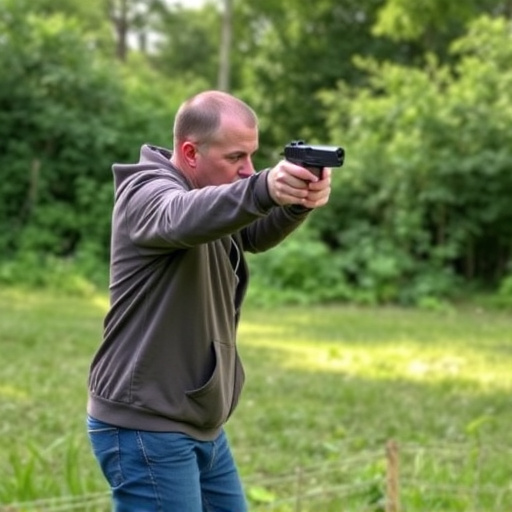
When evaluating a stun gun’s stopping power, several key factors come into play. One of the primary considerations is the device’s voltage and current output. Higher voltage typically translates to more intense jolts, which can incapacitate an attacker. However, it’s crucial to balance this with safety features – the best stun guns offer both maximum shock strength while ensuring minimal risk to bystanders or users.
Another influential factor is the contact area and the design of the electrodes. Wider contact areas deliver more current, increasing the chance of a successful stun. Advanced stun gun models often incorporate intelligent design elements, like smart sensors that optimize electrode placement for maximum effectiveness. Moreover, weather-resistant construction and durable materials are essential safety features in stun guns, ensuring reliable performance in various conditions.
The Role of Amperage and Voltage in Stun Guns
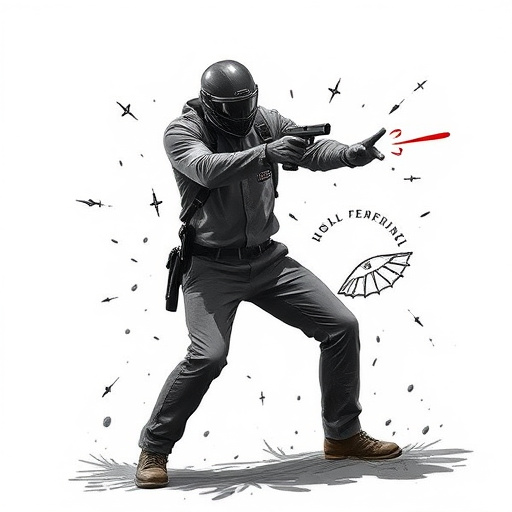
Stun guns, also known as electric shock weapons, work by delivering a powerful electrical current to immobilize a target. The effectiveness of a stun gun largely depends on two key factors: amperage and voltage. Amperage refers to the amount of electricity flowing through the device, while voltage is the pressure that drives the current. Together, these elements determine the stun gun’s stopping power.
Higher amperage levels typically result in more intense shocks, leading to faster immobilization. Voltage plays a crucial role in ensuring the shock is strong enough to override the target’s natural defense mechanisms. Modern stun guns often feature advanced safety features, such as adjustable voltage and amperage settings, allowing users to customize the device’s output based on the situation. These best safety features ensure that the weapon can be deployed effectively while minimizing risks of excessive force or accidental discharge.
Testing Protocols for Evaluating Stopping Power

When evaluating stun guns, understanding the testing protocols behind stopping power ratings is paramount. These tests are designed to simulate real-world scenarios and assess a stun gun’s effectiveness in neutralizing a threat. Reputable manufacturers adhere to stringent guidelines set by industry standards, ensuring consistent and reliable results. The process often involves controlled experiments where live subjects or advanced mannequins are used to gauge the impact of the stun gun’s electric current.
The best safety features in stun guns are often reflected in these testing protocols. Features like precise current control, integrated safety switches, and automatic shut-off mechanisms are crucial for minimizing risks during evaluation. These safety measures not only protect testers but also ensure that the stun gun’s true stopping power is accurately measured, providing users with a reliable tool for self-defense.
Top Stun Guns with Impressive Safety Features

When considering a stun gun for self-defense, choosing one with robust safety features is paramount. Top models go beyond simply delivering a powerful shock by incorporating advanced mechanisms to prevent accidental discharges and ensure user safety. Some of the best safety features in stun guns include tactical triggers that require a firm press, preventing unintended activation, and smart circuits that adapt to various situations, minimizing the risk of overloading.
Additionally, many high-end stun guns feature light and sound alerts, providing visual and auditory cues during use. These smart features not only enhance the device’s effectiveness but also contribute to its overall reliability, making them ideal for individuals seeking both stopping power and safety in a compact, portable package.
Legal Considerations and Responsible Ownership
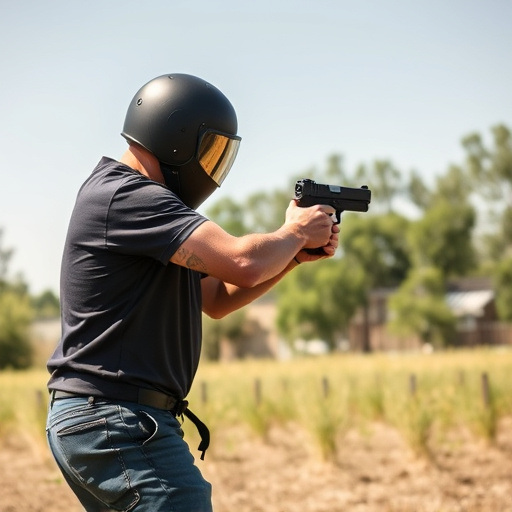
Stun guns, while powerful tools for personal defense, come with a significant responsibility. Legal considerations vary widely across jurisdictions, with some places allowing their open carry and others restricting them to certain professions or requiring permits. It’s crucial to understand your local laws regarding stun gun ownership, use, and transport to avoid legal repercussions.
Responsible ownership involves more than just knowledge of the law. Stun guns should always be treated as potentially lethal weapons, requiring the same level of caution and respect as firearms. Investing in a stun gun with the best safety features, such as automatic shut-off mechanisms and tamper-resistant designs, is essential. Additionally, proper training and practice are vital to ensure effective deployment during an emergency situation while minimizing the risk of unintended harm.
When it comes to choosing a stun gun, understanding stopping power ratings is paramount for ensuring personal safety. By delving into key factors, testing protocols, and legal considerations, you can make an informed decision. Look for stun guns with the best safety features, such as high amperage and voltage, backed by reliable testing methods. Responsible ownership and adherence to local laws are essential, enabling you to protect yourself effectively while avoiding unintended consequences.
